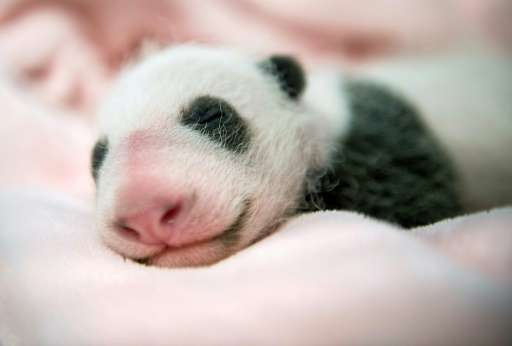High hopes for Australian bid to breed panda cubs

A giant panda couple struggling to produce cubs in an Australian zoo have been given a helping hand by vets who hope to overcome the bears' notorious breeding difficulties with three artificial inseminations.
Fu Ni and Wang Wang arrived in Adelaide from China in late 2009 as part of a programme aimed at breeding the Southern Hemisphere's first baby pandas.
But attempts at mating and artificial insemination have so far failed to impregnate Fu Ni, with the species' short annual breeding period—typically just 36 hours between February and May—proving too small a window.
Vets at Adelaide Zoo worked feverishly over the weekend with a reproductive specialist from China to complete the three procedures, which they say have given the couple their best-ever chance of having a cuddly cub.
"We've had a busy couple of days working round the clock to maximise the chance of a positive result," senior vet Ian Smith said Monday.
This is the fourth attempt to artificially inseminate Fu Ni and it will not be known until about two weeks prior to her potentially giving birth if it has been successful. Gestation can take between 50 and 160 days.
Giant pandas are notoriously clumsy at mating, with males said to be bad at determining when a female is in the right frame of mind and often befuddled at knowing what to do next.
In the event the animals do feel compatible, sex is frequently over too quickly to impregnate the female.
Only some 1,864 pandas remain in the wild, mainly in China's Sichuan province. A further 370 live in captivity in breeding programs around the world.
Giant pandas have a famously low reproductive rate, a key factor along with habitat loss in their status as vulnerable on the International Union for Conservation of Nature's Red List of threatened species.
Births in captivity are rare, but a cub was born at a Japanese zoo in June, while a French zoo welcomed its first-ever baby panda last month.
© 2017 AFP




















